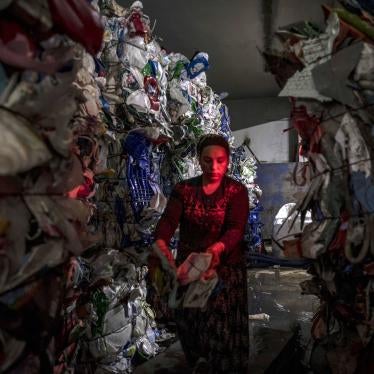Thank you Mr. Chairman,
Protocol III on incendiary weapons was created because incendiary weapons cause particularly cruel injuries to human beings—civilians and combatants alike. Furthermore, incendiary weapons are prone to being indiscriminate, starting fires and causing casualties over a large area without distinguishing between soldiers and civilians. These are not contested facts. They are the field realities that led to the adoption of the protocol.
Yet, Protocol III has failed to live up to its promise. The protocol entered into force on December 2, 1983, and nearly three decades of state practice have shown it to be inadequate in a number of respects. The protocol’s definition of incendiary weapons as those “primarily designed” to set fire to objects or cause burn injuries to persons is too narrow, allowing multi-purpose and widely used incendiary munitions such as white phosphorus to escape regulation. The restrictions themselves are insufficiently rigorous, with exceptions that too often permit the use of incendiary weapons in ways that could be dangerous to civilians. Having different rules for air-delivered and surface-delivered incendiary weapons makes no sense in today’s world. Moreover, continued use of incendiary weapons by states parties and states not party reflects the failure of Protocol III to generate stigma against such weapons.
All of these problems have been exacerbated by the United States’ reservation to Protocol III submitted in January 2009, which undermines the normative force of the existing rules.
In October 2011, The New York Times provided a concrete example of ambiguities in practice, which involved US Forces in Afghanistan using 105mm white phosphorus artillery projectiles in an anti-material role to attack insurgent rocket launch locations that had just fired at them. The article stated, “In this case, soldiers said, the white phosphorus rounds were intended to set fire to any Taliban rockets at the firing positions, causing them to explode and preventing them from being fired on the American outposts.” According to the article, “American and NATO rules restrict the use of white phosphorus only to when its burning effects are deemed necessary and cannot be replicated by other munitions.” Yet some states believe that any use of white phosphorus is permitted under the protocol because it is not “primarily designed” as an incendiary weapon.
Over the past two years, we have called upon States Parties to revisit the text of the protocol and to amend its 30-year-old provisions to address more comprehensively the problems of incendiary weapons. Human Rights Watch and the Harvard Law School International Human Rights Clinic have distributed three memoranda to delegates on this subject. The first made the case for why the protocol needs to be amended. The second focused on the humanitarian harm caused by the weapons. The third memo laid out a series of possible amendments that would increase Protocol III’s effectiveness. The organizations have also distributed a Q&A summarizing their arguments this week.
Now, in statements made in the opening days of the Fourth Review Conference as well as in written communications with Human Rights Watch, several States Parties have suggested ways forward. We particularly welcome Qatar’s statement yesterday during the general exchange of views that it “supports the principle of amending the Protocol III on incendiary weapons.” Honduras also explicitly stated its support for an amendment in a July 2011 letter.
Australia noted in its general statement that “there is an inconsistency in Protocol III that allow[s] two munitions used for the same purpose and having the same effect to be subject to differing levels of restrictions under IHL.” We agree with Germany that it is an appropriate occasion “to begin to study and examine the possible mis-use of white phosphorus as a weapon” and welcome its proposal of “devoting one day of an experts meeting to presentations on the subject and in light of this possibly the development of recommendations for the further treatment of this topic.”
The Holy See said, “It would be useful to revisit this issue in order to improve and strengthen provisions for the protection of civilians from the harmful effects of these weapons,” and Belarus stated, “We are ready to listen and discuss the humanitarian concerns in this area.”
Additionally, in letters received by Human Rights Watch, Austria and Switzerland have stated that they are considering the possibility of amending the protocol, while Saudi Arabia affirmed that it would be willing to consider this issue if there is consensus during the review conference. Ireland said it is “open to proposals to consider particular weapons in the CCW context, including white phosphorus.” Belgium, Canada, and New Zealand have also indicated their readiness to discuss Protocol III.
Thus, in addition to reviewing issues of compliance with and universalization of the protocol during this Review Conference, it appears that there is sufficient support among States Parties to consider a mandate for future work on incendiary weapons, which should be understood broadly to encompass all munitions with incendiary effects.
Given the ongoing harm caused by incendiary weapons, it is crucial that States Parties revisit Protocol III. Amendment of the protocol is needed to enhance the protection of civilians from the harmful effects of incendiary weapons and to increase the stigma against these weapons.







